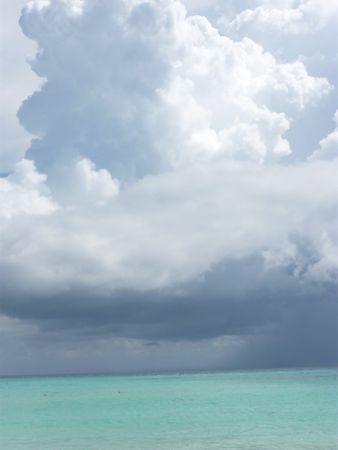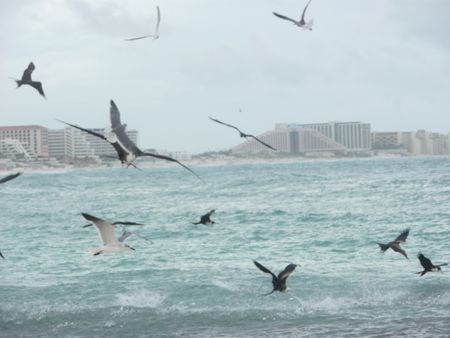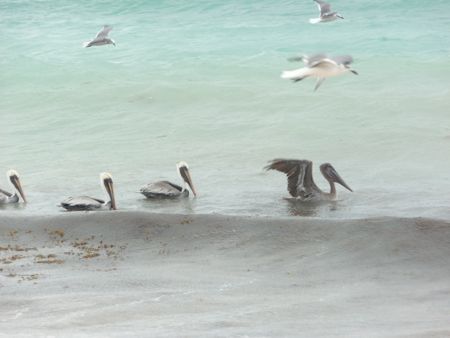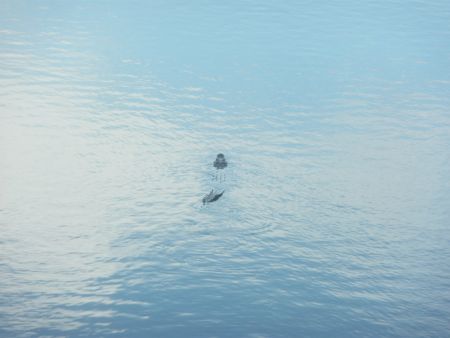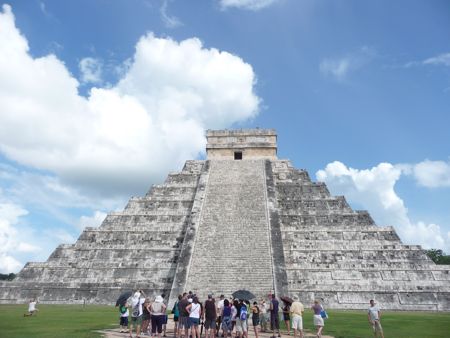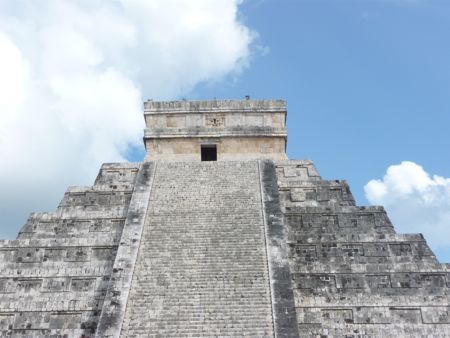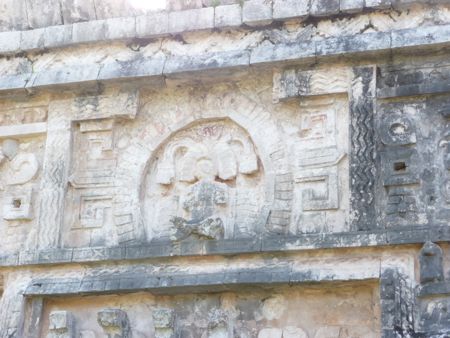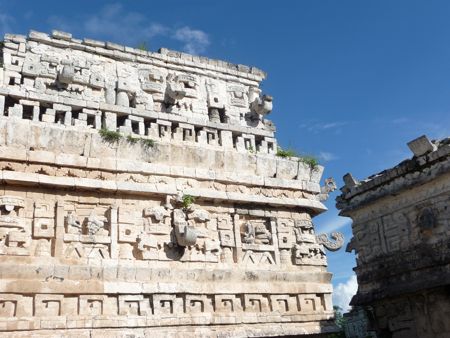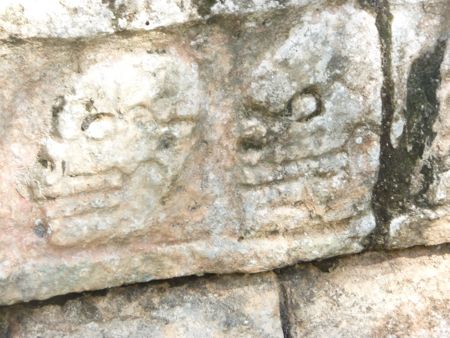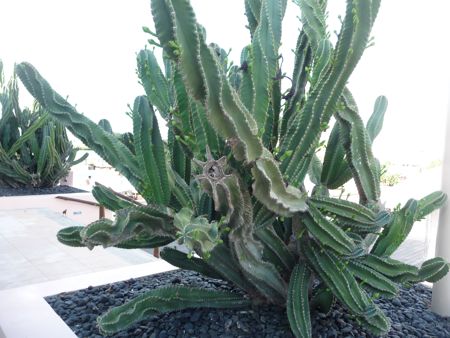I returned to the Riviera Maya in Mexico for a week. Having been there and written about it on the travel side before, I will post my comments and photos here in the “blog” side .
The big difference is that this time we were in the middle of the rainy (or hurricane) season. This translated into lots of clouds, some heavy rain, some strong winds, extremely humid weather and most disappointing, a lot of seaweed in the water. Watching the maintenance staff trying to remove and dispose of it reminded me of Sisyphus who had to roll a huge rock up a steep hill, but before he could reach the top of the hill, the rock would always roll back down, forcing him to begin again. No matter how many garbage bags they filled with the seaweed, there was always more rolling in…and because its acts as a kind of broom or rake in the water, it brought in a lot of unsightly garbage tangled in .
Having said this, these conditions made for some spectacular scenery, such as thunder-storms, amazing clouds and, on our last day, an influx of birds worthy of a Hitchcock movie.
Frigatebirds, pelicans and a variety of seagulls all appeared together and stayed close to the shore for most of the day diving in over and over. Obviously a large school of fish had been pushed towards shore and provided an all you can eat buffet for them.
I even caught a glimpse of a famous, if elusive, resident at the hotel: a crocodile! I suspect this might have been a young one as it could not have been more than 5 or six feet long
To conclude the zoological observations I also saw a few iguanas, but not nearly as much as on previous visits.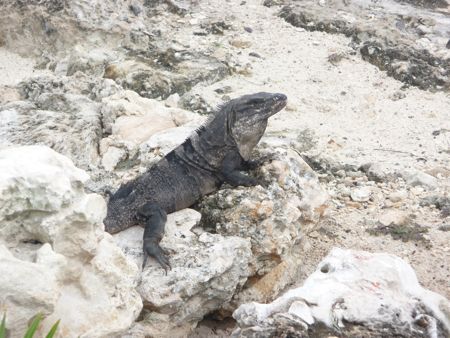
But the highlight of the trip was a visit to Chichen Itza. It is a long drive (close to 3 hours) from the coast but well worth it. The choice of this location for a large settlement may seem odd but geography has the explanation: Northern Yucatán is arid, and the rivers in the interior all run underground. There are two large, natural sink holes, called cenotes, in Chichen that could have provided plentiful water year round, making it attractive for settlement. Which also explains the name: Chichen Itza which means “at the mouth of the well of Itza.
It is a huge site, still only partly excavated. The main attraction, to this day, is the Temple of Kukulkan (the Maya name for Quetzalcoatl), often referred to as “El Castillo” (the castle). This step pyramid has a ground plan of square terraces with stairways up each of the four sides to the temple on top.
Seeing it on any day would have been exciting but we happened to go on the day of the equinox, which is very special because, at the rising and setting of the sun, the corner of the structure casts a shadow in the shape of a plumed serpent – Kukulcan, or Quetzalcoatl – along the west side of the north staircase. On this occasion, the shadows from the corner tiers slither down the northern side of the pyramid with the sun’s movement to the serpent’s head at the base.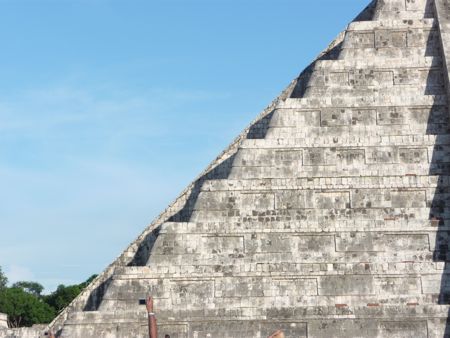
The other famous monument is the great ball court. I have yet to understand how this game was played but it seems that this one is unusually large.
In a different area is another group of buildings in a more ornate style. Among them a building called El Caracol (“the snail”) because of the stone spiral staircase inside but it is believed to have been an observatory with doors and windows aligned to astronomical events.
In the same area, a building called La Iglesia has very ornate façade.
Another building was used as an observatory. It is obvious that they had great knowledge of the solar system..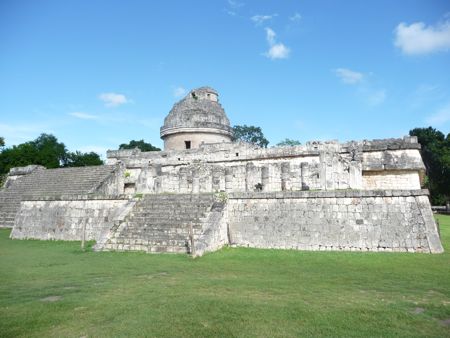 Little is known about the Mayans and their disappearance, but archeologists seem to agree that human scarifices were performed there as indicated by images of decapitation and human sculls.
Little is known about the Mayans and their disappearance, but archeologists seem to agree that human scarifices were performed there as indicated by images of decapitation and human sculls.
OLÉ!
